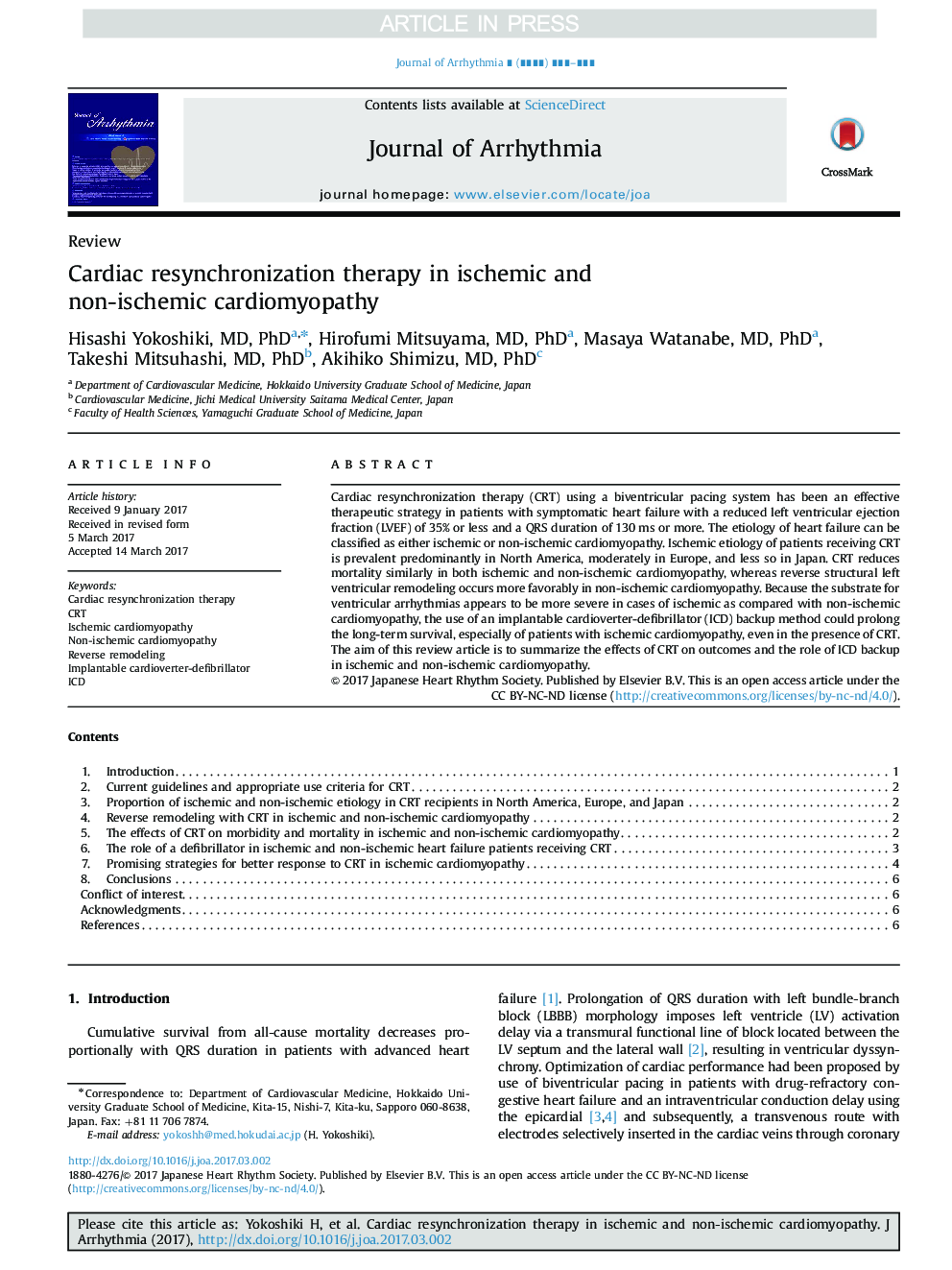| Article ID | Journal | Published Year | Pages | File Type |
|---|---|---|---|---|
| 5613800 | Journal of Arrhythmia | 2017 | 7 Pages |
Abstract
Cardiac resynchronization therapy (CRT) using a biventricular pacing system has been an effective therapeutic strategy in patients with symptomatic heart failure with a reduced left ventricular ejection fraction (LVEF) of 35% or less and a QRS duration of 130Â ms or more. The etiology of heart failure can be classified as either ischemic or non-ischemic cardiomyopathy. Ischemic etiology of patients receiving CRT is prevalent predominantly in North America, moderately in Europe, and less so in Japan. CRT reduces mortality similarly in both ischemic and non-ischemic cardiomyopathy, whereas reverse structural left ventricular remodeling occurs more favorably in non-ischemic cardiomyopathy. Because the substrate for ventricular arrhythmias appears to be more severe in cases of ischemic as compared with non-ischemic cardiomyopathy, the use of an implantable cardioverter-defibrillator (ICD) backup method could prolong the long-term survival, especially of patients with ischemic cardiomyopathy, even in the presence of CRT. The aim of this review article is to summarize the effects of CRT on outcomes and the role of ICD backup in ischemic and non-ischemic cardiomyopathy.
Keywords
Related Topics
Health Sciences
Medicine and Dentistry
Cardiology and Cardiovascular Medicine
Authors
Hisashi MD, PhD, Hirofumi MD, PhD, Masaya MD, PhD, Takeshi MD, PhD, Akihiko MD, PhD,
